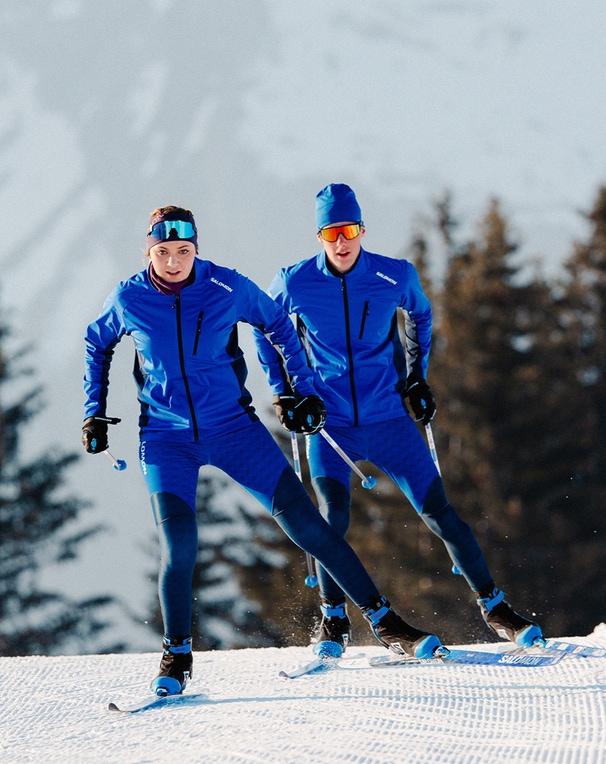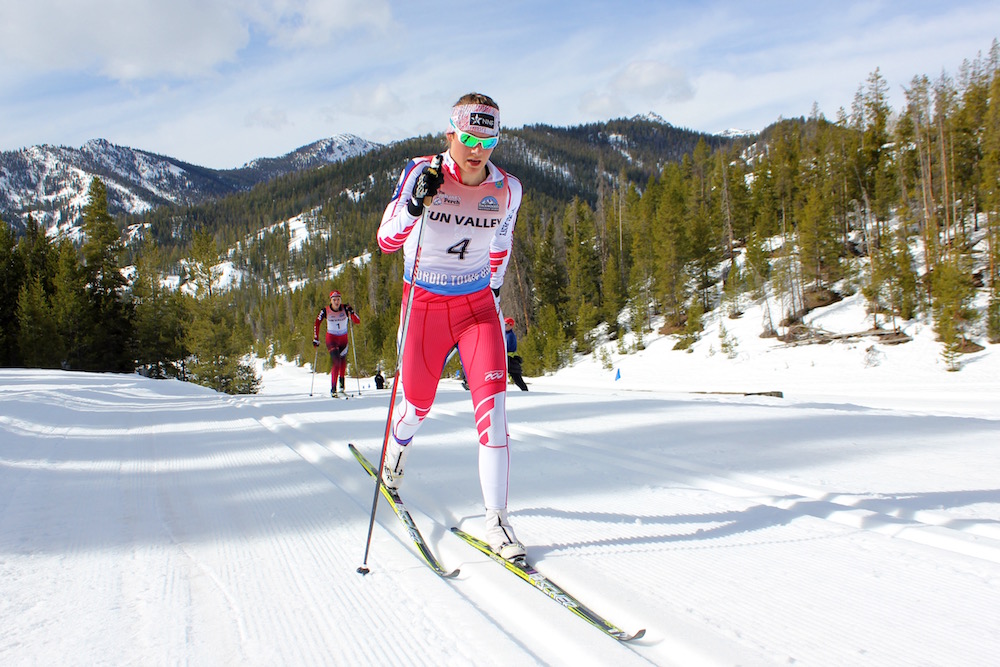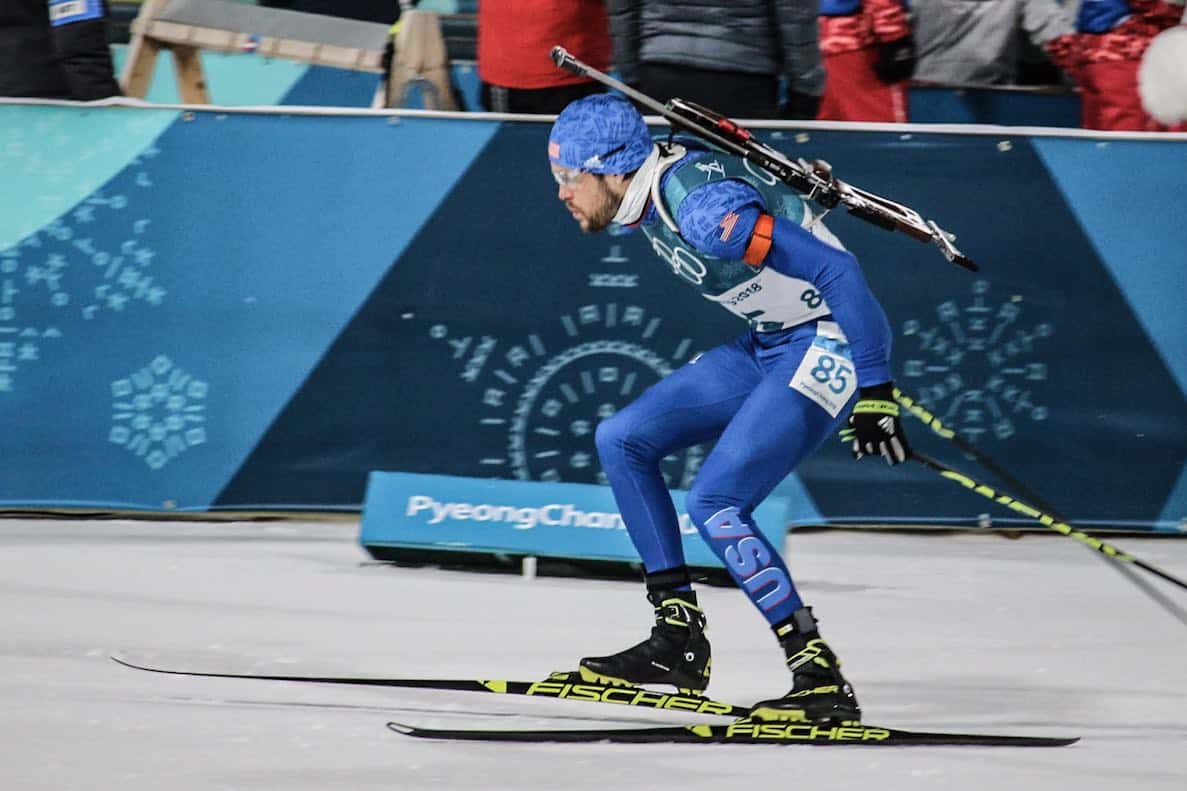
How to Train for a Cross-Country Skiing Race: Tips and Techniques
Written: editor | May 17, 2023

Basic Techniques for Cross Country Skiing Race Training
Classic Cross Country Skiing Technique
If you're looking to improve your cross country skiing race performance, mastering the classic technique is essential. Here are a few tips to help you excel:
-
Glide: Focus on achieving a smooth and efficient gliding motion by transferring your weight from one ski to the other. Keep your skis parallel and maintain a slight forward lean.
-
Kick: Use the kick zone of your ski to generate forward propulsion. Apply pressure with your weight on the ski, and then kick off by extending your leg and pushing down with your foot.
Skating Technique
For a more dynamic and faster skiing style, the skating technique is the way to go. Here's what you need to keep in mind:
-
V-Technique: Master the V-technique by pushing off the inside edge of one ski while gliding on the outer edge of the other. Imagine you are ice skating on flat ground.
-
Pole Push: Coordinate your arm and leg movements, using your poles to generate power. As you push off with one leg, simultaneously push off with the opposite arm, extending your poles backward.
Efficient Pole Technique
Proper pole technique can significantly improve your speed and efficiency in cross country skiing races. Follow these tips:
-
Timing: Time your pole plant with your leg stride. As you kick off with one leg, plant your pole firmly in the snow at the same time.
-
Push and Release: Push down on your poles to generate momentum and then quickly release them from the snow to allow for the next stride.
Remember to start slow and gradually build your race training intensity. With consistent practice and these basic techniques, you'll be well on your way to mastering cross country skiing and achieving your race goals!

Essential Gear for Cross Country Skiing Race Training
When it comes to cross country skiing race training, having the right gear is essential. Whether you're a beginner or a seasoned skier, investing in the appropriate equipment can greatly enhance your performance and overall experience on the trails. Here are some key pieces of gear you'll need:
Skis and Bindings
The first and most important item on your list is a good pair of skis and bindings. The type of skis you choose will depend on your skill level, terrain, and racing style. Classic skis are designed for groomed trails, while skate skis are better suited for firm, packed snow. Make sure to select bindings that are compatible with your boots.
Boots
Next, you'll need a pair of cross country ski boots. These boots are specifically designed to provide support and flexibility for the unique movements involved in skiing. Look for boots that fit snugly and have good ankle support. It's also important to consider the type of binding system your boots are compatible with.
Poles
Poles are another essential piece of gear for cross country skiing. They help to maintain balance and provide additional propulsion on the trails. When choosing poles, make sure they are the correct length for your height and skiing style. For classic skiing, the poles should reach your armpits, while skate skiing poles should be slightly longer.
Clothing and Accessories
Lastly, don't forget to dress appropriately for the weather conditions. Layering is key in cross country skiing, as it allows you to adjust your clothing as needed. Look for moisture-wicking base layers, insulating mid-layers, and a windproof outer shell. Accessories such as gloves, hats, and sunglasses or goggles are also important to protect against the elements.
By investing in the right gear, you'll be well-equipped to take on the challenges of cross country skiing race training and make the most of your time on the trails. Remember to choose gear that suits your individual needs and preferences for a comfortable and enjoyable experience.

Physical Training for Cross Country Skiing Races
If you're gearing up for a cross country skiing race, congratulations! You're about to embark on an exhilarating adventure. To ensure you're fully prepared for the challenges ahead, it's essential to focus on physical training. Here are some key areas to consider:
Endurance and aerobic training
Building endurance is crucial for cross country skiing races. Focus on activities that elevate your heart rate and improve your cardiovascular fitness. Incorporate exercises like running, cycling, or rowing into your routine. Gradually increase the duration and intensity to simulate the demands of the race.
Strength Training
Strength training plays a vital role in cross country skiing. It helps improve your overall power and stability. Include exercises that target your lower body, such as squats, lunges, and step-ups. Don't forget to work on your core and upper body strength as well, as they play a significant role in maintaining balance and propelling yourself forward.
Flexibility and Mobility Exercises
Having good flexibility and mobility is essential for efficient skiing technique and injury prevention. Incorporate exercises like stretching, yoga, and mobility drills into your training routine. Focus on stretching your legs, hips, and lower back to improve range of motion and prevent muscle imbalances.
Remember, consistency and gradual progression are key when training for a cross country skiing race. Make sure to listen to your body and give yourself enough rest and recovery time. Additionally, proper nutrition and hydration are crucial for optimal performance. Stay hydrated and fuel your body with nutritious foods to support your training efforts.
Embrace the challenge, enjoy the process, and get ready to conquer the cross country skiing race!

Mental Preparation for Cross Country Skiing Races
Goal Setting
When it comes to preparing for cross country skiing races, mental preparation is just as important as physical training. One key aspect of mental preparation is goal setting. Setting specific, achievable goals can help motivate you throughout your training and keep you focused on what you want to achieve in each race. Whether it's improving your time, finishing in a certain position, or mastering a particular technique, setting goals gives you something to work towards and provides a sense of accomplishment when you achieve them.
Visualization Techniques
Another powerful tool for mental preparation is visualization. By creating a mental image of yourself skiing successfully, you can improve your performance in actual races. Find a quiet place, close your eyes, and imagine yourself skiing smoothly and with confidence. Visualize each aspect of the race, from the starting line to the finish, and mentally rehearse your movements and techniques. This technique can help boost your confidence, reduce anxiety, and improve your overall performance.
Managing Race Day Nerves
Race day nerves are common for any athlete, but it's important to learn how to manage them effectively. One way to do this is through deep breathing exercises. Taking deep, slow breaths can help calm your nervous system and reduce anxiety. Practice deep breathing techniques leading up to race day, and use them as a tool whenever you start feeling nervous or overwhelmed. Additionally, develop a pre-race routine that helps you relax and get into the right mindset. This could include stretching, listening to music, or engaging in calming activities that help you focus and feel grounded.
By incorporating these mental preparation techniques into your cross country skiing race training, you can improve your focus, motivation, and overall performance. Remember to set realistic goals, visualize success, and find strategies to manage race day nerves. With a strong mental game, you'll be well-equipped to excel in your races.

Cross Country Skiing Race Strategies
Pace Setting
When it comes to cross country skiing races, pacing yourself correctly can make all the difference. To improve your race strategy, consider the following tips:
-
Start strong, but not too fast: It's important to get a good start and find a comfortable rhythm early on. However, be mindful not to exhaust yourself too quickly, as this can lead to burnout later in the race.
-
Find your optimal pace: Experiment during training to determine the pace at which you can maintain your energy and speed over the course of the race. Consistency is key, so avoid drastic changes in speed.
Technique Variation during the Race
Varying your cross country skiing techniques can help you tackle different terrains and conditions effectively. Here are some techniques to incorporate into your race:
-
Classic skiing: This technique works best on flat or gently rolling terrains. It involves a diagonal stride motion with the legs moving parallel.
-
Skate skiing: This technique is ideal for more challenging terrains and involves a motion similar to ice skating, pushing off the inner edge of the ski while keeping the skis parallel.
Course Familiarization
Familiarizing yourself with the race course can give you an edge over your competitors. Here's how to make the most of it:
-
Study the course map: Get a good understanding of the route, paying attention to uphill, downhill, and flat sections. This will help you plan your energy distribution accordingly.
-
Pre-race practice: If possible, ski on sections of the course before the race. This will give you a chance to familiarize yourself with the terrain, allowing you to adjust your technique and strategy accordingly.
Remember, consistency in training, proper race pacing, and technique variation are all crucial factors to succeed in cross country skiing races. So, train hard, embrace different techniques, and get to know the course well to maximize your performance!

Nutrition and Hydration for Cross Country Skiing Races
Pre-Race Fueling
When it comes to preparing for a cross country skiing race, proper nutrition is crucial. Start by fueling your body with a balanced meal that includes carbohydrates, protein, and healthy fats. Carbohydrates will provide the energy needed for a long race, while protein will aid in muscle recovery and repair. Avoid heavy or greasy foods that may cause discomfort during the race.
In-Race Nutrition
During the race, it's important to refuel your body to maintain optimal performance. Carrying lightweight and easily digestible snacks such as energy gels, bars, or sports drinks is recommended. These provide a quick source of energy and help replenish electrolytes lost through sweat. Remember to drink water regularly to stay hydrated throughout the race.
Post-Race Recovery
After completing a cross country skiing race, recovery is key to replenishing your body's energy stores and repairing muscles. Focus on consuming a recovery meal or snack within 30 minutes of finishing the race to kickstart the recovery process. This meal should include a balance of carbohydrates and protein to replenish glycogen stores and aid in muscle repair. Examples include a turkey sandwich, yogurt with fruit, or a protein shake.
Additionally, staying hydrated after the race is essential. Continue to drink water or sports drinks to replace fluids lost during the race. Consider including electrolyte-rich foods like bananas or coconut water to restore electrolyte balance.
Remember, proper nutrition and hydration play a crucial role in your cross country skiing race performance. By fueling your body before, during, and after the race, you can optimize your energy levels, endurance, and recovery, ensuring a successful and enjoyable race experience.



